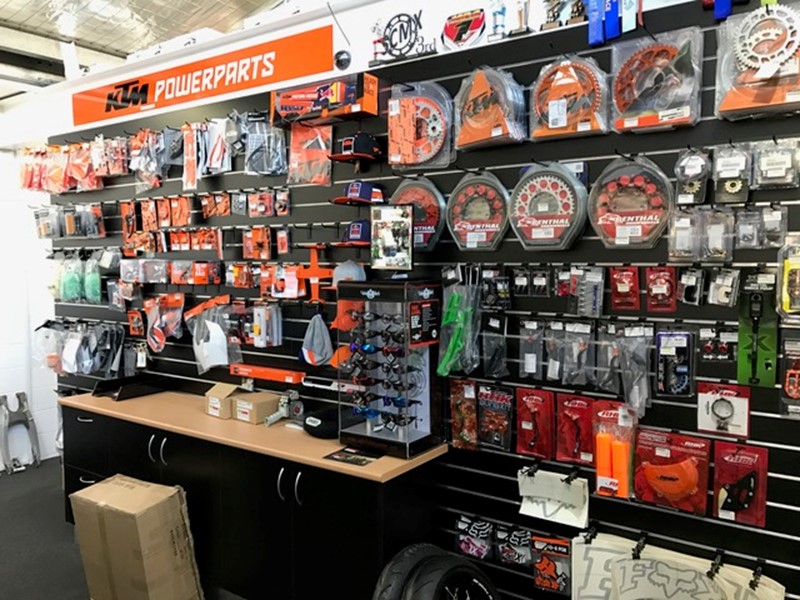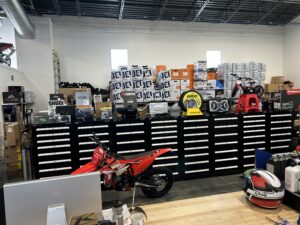Comprehending the Important Components of a Motorcycle: A Comprehensive Overview for Enthusiasts
For bike enthusiasts aiming to elevate their riding experience and guarantee their bikes run smoothly, understanding the essential parts of a motorcycle is vital. Each aspect, from the engine's elaborate functions to the essential role of the braking mechanisms, not just affects efficiency yet likewise safety and convenience. This guide will certainly stroll via the fundamental components that every biker ought to recognize with, enabling educated selections in both maintenance and possible upgrades. As we start this exploration, one must ask: how does each component engage to create the smooth trip every enthusiast seeks?
Engine Elements

The camshaft plays a critical role in managing the timing of the engine's shutoffs, making certain the accurate opening and closing essential for effective fuel and air intake, in addition to exhaust expulsion. This timing is essential to keeping ideal engine performance and efficiency. Additionally, the carburetor or fuel shot system, depending on the bike model, is accountable for mixing air with fuel in the right proportion for combustion.
The air conditioning system, either air or liquid-based, functions to preserve the engine's temperature level within functional restrictions, preventing overheating and making certain long life - motocross parts nz. Each element, thoroughly created and integrated, adds to the seamless operation of the engine, defining the motorcycle's power outcome and total efficiency
Transmission System
Essential to the bike's functionality, the transmission system makes certain efficient power transfer from the engine to the wheels. This system makes up a number of important parts, including the clutch, gearbox, and last drive, each playing an essential duty in converting the engine's power right into activity. The clutch, usually run by a hand lever, serves to engage and disengage the engine from the transmission, enabling for smooth equipment modifications and controlled acceleration.
The gearbox, often described as the transmission correct, includes a collection of equipments that motorcyclists can by hand move via to adjust the bike's speed and torque outcome. These gears are organized in a sequence that allows the bike to accelerate efficiently and keep optimal engine performance across different rates. The majority of motorcycles use a consecutive gearbox, needing the rider to shift gears in a fixed order.
Braking Mechanisms
While understanding the transmission system is vital to taking advantage of a motorcycle's power, equally essential is the ability to regulate and stop that power successfully, which is where stopping mechanisms enter into play. Brakes are essential for safety and security and efficiency, supplying the biker with the necessary control to navigate different terrains and problems. Typically, bikes feature two sorts of stopping systems: disc brakes and drum brakes.
Disc brakes are more common in modern-day motorcycles as a result of their exceptional performance. They include a brake disc, caliper, and pads. When activated, the caliper presses the brake pads versus the spinning disc, transforming kinetic power into heat, therefore slowing the wheel. This investigate this site system offers much better warmth dissipation, constant efficiency, and enhanced stopping power, particularly in wet problems.
On the other hand, drum brakes, though much less typical, are still discovered in some motorcycles. They function by pushing brake footwear against the inner surface area of a drum affixed to the wheel. While typically much less reliable in warmth dissipation and quiting power, drum brakes are simpler and extra cost-effective.
Comprehending these stopping systems' subtleties permits motorcyclists to preserve their bikes effectively and value the design that makes certain effective and risk-free quiting.
Suspension and Steering
Suspension and guiding systems are crucial parts that considerably influence a bike's handling and ride comfort. The suspension system, containing read this article forks at the front and shock absorbers at the back, takes in roadway irregularities, enhancing security and control. Front forks, normally telescopic or inverted, compress and rebound to alleviate effects, while rear shock absorbers preserve tire contact with the roadway, important for grip and safety and security.
Steering, focused around the handlebars, connects the motorcyclist to the motorcycle's directional control. The guiding head bearings guarantee smooth operation, enabling specific ability to move. Proper positioning and upkeep of these bearings are crucial for predictable steering feedback and lowering motorcyclist exhaustion.
The suspension's adjustability is one more important element; preload, damping, and rebound settings enable modification to fit numerous riding designs and conditions. This adaptability is necessary for optimizing efficiency, whether navigating urban streets or taking on rugged routes. Technologies like electronic shock absorber offer real-time changes, improving experience top quality throughout varied terrains.

Electrical Systems
After making certain a controlled and smooth experience through efficient suspension and steering systems, focus turns to the electrical systems, a critical aspect of contemporary bikes. These systems play an essential function not just in starting the engine but additionally in powering different components that boost the functionality and security of the motorbike.
At the heart of a motorbike's electric system is the battery, which shops electric power necessary for beginning the engine and powering complementary systems - moto parts nz. The alternator or generator, coupled with the rectifier-regulator, guarantees the battery stays charged while the motorbike is in operation, transforming mechanical power into electric power and preserving voltage degrees
The ignition system, an additional crucial element, is accountable for firing up the air-fuel blend in the engine's cylinders. Modern motorcycles frequently use an electronic ignition system, supplying better performance and reliability compared to traditional systems.
Lighting systems, consisting of fronts lights, tail lights, and indicators, are likewise important, making certain visibility and security for the biker. Added digital elements such as sensing units, control devices, and displays add to advanced features like fuel shot management, anti-lock stopping systems (ABDOMINAL), and electronic dashboards, additionally enhancing the riding experience.
Verdict
A complete understanding of a bike's necessary components, see this site consisting of the engine, transmission system, braking mechanisms, suspension, guiding, and electrical systems, is vital for fanatics intending to enhance safety, efficiency, and convenience. Mastery of these elements enables informed choices relating to upkeep and upgrades, inevitably boosting the riding experience. By integrating this expertise, motorcyclists can ensure their motorbikes run at peak effectiveness and dependability, thereby maximizing both pleasure and longevity of their vehicles.
For bike enthusiasts looking to boost their riding experience and guarantee their bikes run smoothly, recognizing the necessary parts of a motorbike is critical.Essential to the bike's capability, the transmission system guarantees efficient power transfer from the engine to the wheels.While comprehending the transmission system is key to taking advantage of a motorcycle's power, similarly essential is the capacity to control and stop that power effectively, which is where braking systems come right into play. Usually, bikes include two kinds of stopping systems: disc brakes and drum brakes.
A detailed comprehension of a motorbike's necessary elements, consisting of the engine, transmission system, stopping mechanisms, suspension, guiding, and electrical systems, is important for lovers intending to maximize performance, safety and security, and convenience.